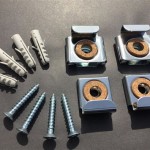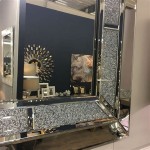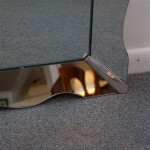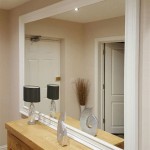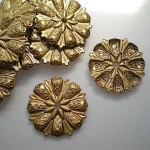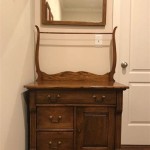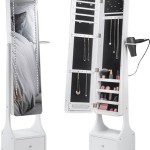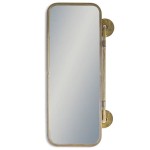How Do You Hang a Heavy Frameless Mirror on Drywall?
Hanging a heavy, frameless mirror on drywall presents unique challenges. The absence of a frame means there are no pre-drilled holes or readily available hanging points. Additionally, the weight of the mirror necessitates a secure mounting solution to prevent damage to both the mirror and the wall. This article outlines the necessary steps and considerations for safely and effectively hanging a heavy frameless mirror on drywall.
Assess the Mirror and Wall
Before purchasing any hardware, carefully assess both the mirror and the wall. Measure the mirror's dimensions and weight. The weight is crucial for determining the appropriate hanging hardware. Inspect the back of the mirror for any existing hardware or pre-drilled holes. Next, examine the wall. Identify the type of drywall (standard, fire-rated, etc.) and locate wall studs using a stud finder. Marking stud locations provides options for the most secure mounting method. If mounting directly to studs is not feasible, ensure the chosen hanging hardware is rated for drywall installation.
Choose the Right Hanging Hardware
Selecting the correct hardware is arguably the most critical step in this process. Several options are available, each with its own weight capacity and installation requirements:
- J-Channels: These metal or plastic channels are installed on the wall and the mirror slides into them. They offer good support for heavier mirrors and provide a clean, flush mount. Ensure the J-channels are rated for the mirror's weight.
- Mirror Clips: These small clips grip the edges of the mirror and are secured to the wall. While suitable for lighter mirrors, multiple clips are necessary for heavier mirrors, and precise placement is vital for even support.
- Heavy-Duty Adhesive: Specialized mirror adhesives can be used for mounting directly to drywall. This method eliminates the need for drilling but requires careful surface preparation and precise application. Always check the adhesive's weight limit and ensure it’s compatible with the mirror and wall materials. This method is generally not recommended for extremely heavy mirrors.
- French Cleats: These interlocking wooden or metal brackets offer a robust solution for heavier mirrors. One part of the cleat is attached to the wall, and the other to the back of the mirror. The two pieces interlock, creating a secure hang.
- Z-Clips: Similar to French cleats, Z-clips interlock to provide a strong and concealed mounting system. They are particularly useful for very heavy mirrors and offer greater adjustability than French cleats.
Prepare the Wall and Mirror
Proper preparation ensures a secure and long-lasting installation. Clean the wall surface with a mild detergent and allow it to dry thoroughly. Mark the desired mirror location on the wall using a level and pencil. If using anchors, pre-drill the necessary holes and insert the anchors according to the manufacturer's instructions. If using adhesives, ensure both the wall and the back of the mirror are clean and dry. For J-channels, French cleats, or Z-clips, mark the mounting locations on both the wall and the mirror back, ensuring precise alignment. Protect the back of the mirror with masking tape or cardboard during installation to prevent scratches.
Install the Hanging Hardware and Mount the Mirror
Follow the manufacturer's instructions carefully when installing the chosen hardware. For J-channels, ensure the channels are level and securely fastened to the wall before sliding the mirror into place. When using clips, ensure they are evenly spaced and provide adequate support for the mirror's weight. With adhesive, apply a generous amount to the designated areas on the back of the mirror and carefully position the mirror on the wall, applying firm pressure for the recommended duration. For French cleats and Z-clips, ensure the two parts align correctly before hanging the mirror. Having an assistant during installation can be invaluable for heavy mirrors, especially when using adhesives or interlocking brackets.
Safety Precautions
Safety is paramount when handling heavy objects. Always wear appropriate safety gear, such as gloves and eye protection. If working alone, consider using suction cups or specialized lifting tools to maneuver the mirror safely. When drilling into walls, be mindful of electrical wiring and plumbing. If unsure about any aspect of the installation process, consult a professional handyman or contractor. A professional can assess the specific requirements of the mirror and wall and recommend the most appropriate and secure installation method.

How To Install A Mirror Without Frame Merrypad
:strip_icc()/ScreenShot2022-04-28at1.12.19PM-e055476c70c6438585fa7c5cd531edcf.png?strip=all)
4 Easy Ways To Hang A Heavy Mirror

How To Hang A Frameless Mirror On The Wall With Pictures
:strip_icc()/DesireeBurnsInteriors1-f76d25cad90041c88fbae4a7dc10aab4.jpg?strip=all)
2 Simple Ways To Hang A Frameless Mirror

How To Hang A Frameless Mirror June 2024 Your Guide Hanging

How To Hang A Large Wall Mirror Step By Tutorial

How To Hang A Large Or Heavy Mirror

How To Install A Mirror Without Frame Merrypad

How To Hang A Heavy Mirror Diy Family Handyman
How To Hang A Heavy Mirror On Drywall Quora

